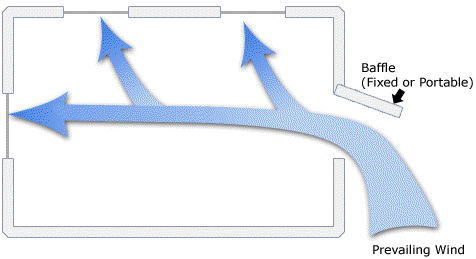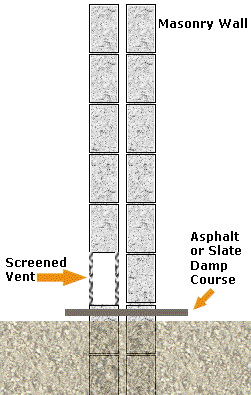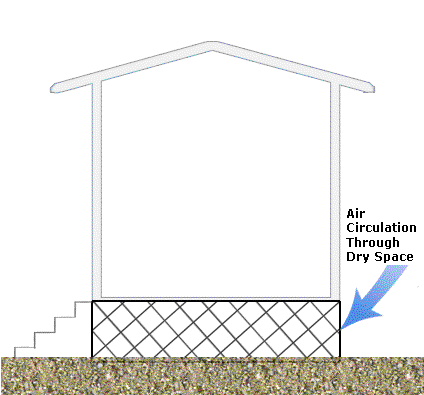Passive Climate Control
Because of high energy costs and the impracticality of HVAC for many libraries and archives, there is now a great deal of interest in passive climate control systems. In tropical climates, HVAC can have serious detrimental effects, especially if it cannot be operated on a continuous basis. Generally, HVAC is used to cool spaces, but in climates with very high humidity it does not function well enough as a dehumidifier to ensure effective climate control, and must often be used in combination with dehumidifiers. When HVAC cannot be used continuously—for example, when it is shut down at night or on weekends—the air heats up and condensation forms on the colder surfaces of books, shelves, and walls, resulting in mold growth.
Another problem is using HVAC to maintain a lower temperature and humidity solely in an isolated area of the library or archive, such as a rare-book vault. When cooler objects are taken from the vault into an uncontrolled area with a higher temperature and humidity, condensation forms on both the objects and on the outside wall of the vault, causing mold growth as well as structural damage to the wall.
Sustainable Building
Passive climate control is associated with the sustainable-building movement, and there has been considerable interest in this area over the last several years with energy costs rising and more attention being paid to environmental issues. Sustainable buildings are designed and constructed in ways that achieve energy savings and a tolerable internal climate. They are located on sites that offer a good microclimate and are designed to regulate heat gain and loss (for example, through passive solar design) and to regulate and improve air circulation. When designing a sustainable building, important issues to consider are location (for example, the building’s orientation relative to prevailing winds and the sun), natural shading (trees, hills, other buildings), shelter (from tropical storms), and structural materials (open, lightweight walls in humid tropical areas, thick walls in arid tropical areas).
Correcting Design Faults
Though many libraries and archives are in existing buildings of poor design, steps can be taken to reduce heat intake and light damage and significantly improve air circulation. Unfortunately in some cases, buildings constructed before the age of HVAC are being replaced with sealed “modern” buildings. The traditional building often functions well and is responsive to local conditions, while the sealed modern building, if it has a poorly functioning HVAC, cannot usually accommodate local conditions. Good air circulation can be the key to maintaining a tolerable climate, as moving air reduces humidity and discourages mold.
In some cases, existing buildings have other design flaws resulting in serious environmental problems. A common problem is “rising damp,” a condition where ground moisture is conducted up through a masonry wall or a concrete floor slab. Moisture can damage shelving and increase humidity in the building.
In the case of a masonry wall, a damp course can mitigate this problem. A damp course is a waterproof barrier placed across a section of the wall just above ground level to prevent moisture rising through the porous masonry. In the case of a concrete slab, a waterproof membrane between the soil and the concrete can help. The following steps can be considered when attempting to improve the climate of a building that lacks HVAC:
• Reduce heat gain by covering windows to the east and west with screens or curtains to control direct sunlight.
• Reduce heat through the use of surrounding vegetation, such as shade trees.

• Increase air circulation by taking advantage of breezes, especially to the south and north, keeping windows open but screened to prevent the entry of insects and birds. Outdoor obstacles to ambient breezes should be removed, and in some cases, outdoor baffles can be erected to divert breezes through windows.

• Open any vents or small windows close to the ceiling to stimulate the circulation of air through open windows closer to floor level. Enhance circulation with ceiling fans if available.
• Reduce heat intake by using reflective colors on roof surfaces.
• Reduce heat from the roof by installing false ceilings.
• Reduce extreme humidity with dehumidifiers.

• Damp courses can be set in place at the base of masonry walls by progressively removing bricks and inserting a waterproof layer, such as slate or asphalt. In the case of cavity walls, air bricks or vents can be installed at the base of the wall to permit air to circulate through the space.

• Ensure that air is permitted to circulate fully beneath raised buildings by removing obstructions and ensuring dry conditions.